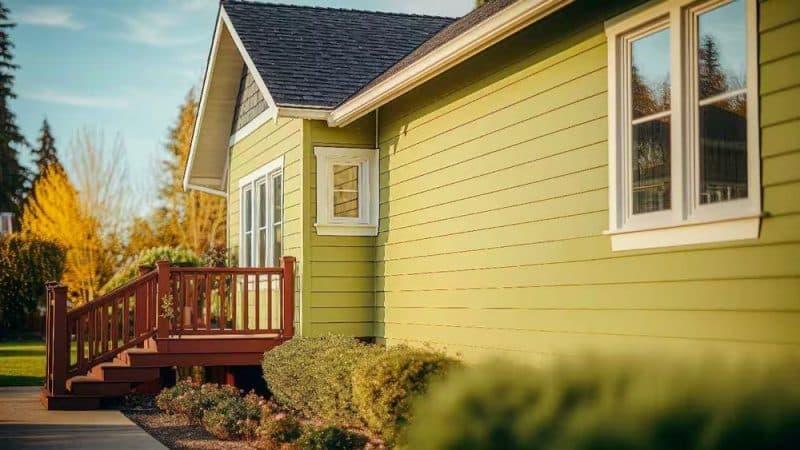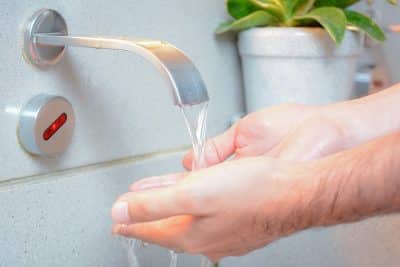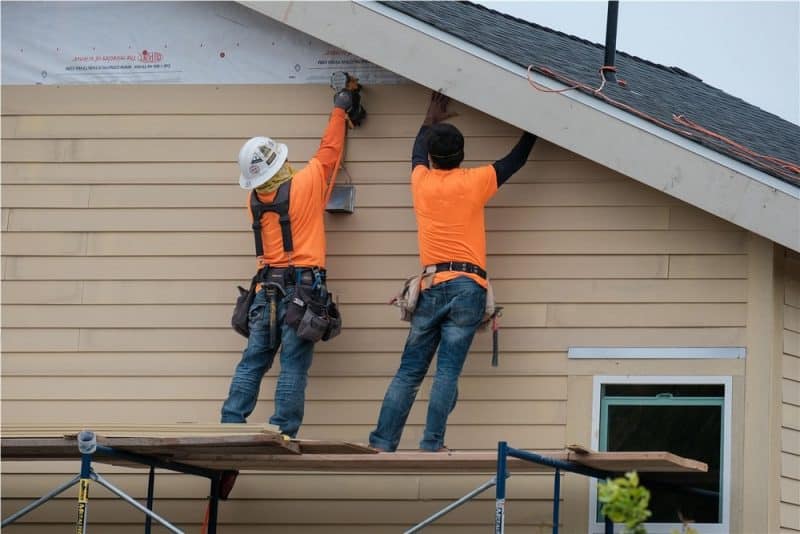
Your home’s siding is more than just an aesthetic feature; it’s a vital component that protects your property from the elements and contributes to its overall structural integrity. Proper maintenance and timely repairs are essential to ensure your siding’s longevity and effectiveness. This guide explores how to identify signs of siding damage, the consequences of neglecting these issues, and the steps for effective siding maintenance and repair. Whether you’re a homeowner, DIY enthusiast, or real estate investor, this guide will equip you with the knowledge to maintain and repair your siding effectively.
Signs of Siding Damage
Identifying siding damage early can prevent minor issues from becoming major, costly repairs. Here are several indicators that your siding may be in distress:
Peeling Paint or Wallpaper Inside Your Home
If you notice peeling paint or wallpaper inside your home, it could indicate water seeping through the siding and affecting your interior walls. This issue arises when siding materials are compromised, allowing moisture to penetrate. Over time, this can lead to significant problems such as mold growth and structural damage. Inspect the exterior siding for any visible damage and address it promptly. If necessary, consult a professional to assess the extent of water infiltration and recommend appropriate repairs.
Mold Growth
Mold growth appears as fuzzy, unsightly patches on your siding and indicates moisture penetration. Damaged siding allows water to seep in, creating a conducive environment for mold and mildew. This not only affects your home’s aesthetic appeal but also poses health risks. Clean the affected area thoroughly and identify the moisture source. Repair or replace the damaged siding to prevent further mold growth. Consider applying mold-resistant treatments to the new siding.
Cracks, Gaps, or Loose Panels
Visible cracks, gaps between panels, or panels that flap in the wind are clear signs that your siding needs attention. These issues can result from weathering, physical impact, or poor installation. Such damage compromises the siding’s ability to protect your home from the elements, leading to potential water infiltration and energy inefficiency. Regularly inspect your siding for any signs of physical damage. Small cracks and gaps can sometimes be sealed with appropriate fillers, but extensive damage may require panel replacement. Ensure proper installation to avoid future issues.
Bubbling or Blistering
Bubbling or blistering of the siding surface indicates trapped water beneath the material. This can happen due to improper installation, inadequate ventilation, or material failure. Over time, trapped moisture can cause the siding to warp, degrade, and lose its protective qualities. Investigate the cause of the trapped moisture, which may involve improving ventilation or correcting installation errors. Replace any compromised sections of siding to restore the integrity of your home’s exterior.
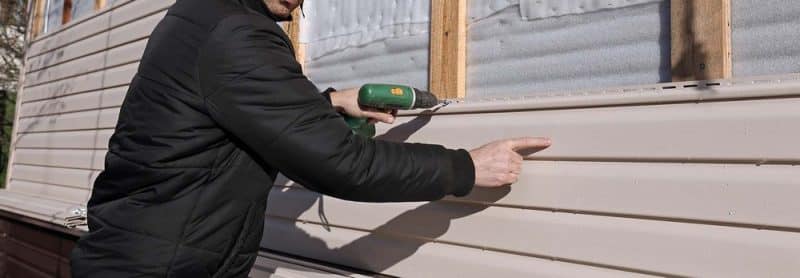
Consequences of Ignoring Siding Damage
Ignoring these warning signs can lead to severe consequences for your home. Persistent moisture infiltration can weaken structural components, leading to rot and decay in wooden elements and corrosion in metal parts. Damaged siding can compromise your home’s insulation, resulting in higher energy bills as your heating and cooling systems work harder to maintain a comfortable temperature. Minor repairs left unaddressed can escalate into major issues requiring extensive and costly remediation efforts.
Proactively addressing siding damage is crucial for maintaining your home’s health and safety. Regular inspections and timely repairs can prevent minor issues from developing into significant problems. Whether you undertake repairs yourself or hire professionals, ensuring your siding’s integrity is an investment in your property’s longevity and value.
DIY vs. Professional Siding Repair
Deciding between DIY and professional siding repair depends on factors like the extent of damage, type of siding, and your expertise. Small cracks or loose panels may be manageable for DIY enthusiasts, but large sections of damaged siding or significant water infiltration require professional expertise. Vinyl siding is easier for DIY due to its lightweight nature, whereas wood siding demands more expertise to prevent rot and pests. Fiber cement siding, being heavier and harder to install, typically requires specialized tools and professional handling.
Professionals follow safety standards, ensure high-quality workmanship, and complete the job efficiently, minimizing disruption. They often offer warranties, providing added assurance. When choosing the right material, consider vinyl for affordability and low maintenance, wood for its natural look and need for regular upkeep, and fiber cement for durability and low maintenance but higher costs. Making informed decisions based on these factors ensures the integrity and beauty of your home.
The Repair Process
Embarking on a DIY siding repair project can be rewarding but requires careful planning and execution. Start by inspecting your home for signs of damage, such as peeling paint, mold, cracks, gaps, loose panels, and bubbling. Use a flashlight to check for hidden damage, especially in less visible areas. Assess whether the damage is manageable for DIY or requires professional help. Gather necessary materials and tools before starting, and be honest about your skill level to avoid costly mistakes.
For those less inclined toward DIY repairs, hiring professionals is often the best choice. Professionals have the experience, tools, and knowledge to handle complex repairs efficiently and safely. They can complete the repairs quickly, minimizing disruption to your home. Professionals also use high-quality materials and often provide warranties, ensuring long-lasting results and peace of mind.
Professional repairs follow safety standards, reducing the risk of accidents and ensuring the structural integrity of your home. They offer high-quality workmanship and proper materials, guaranteeing durable and effective solutions. By choosing professional repairs, you invest in the longevity and value of your property.
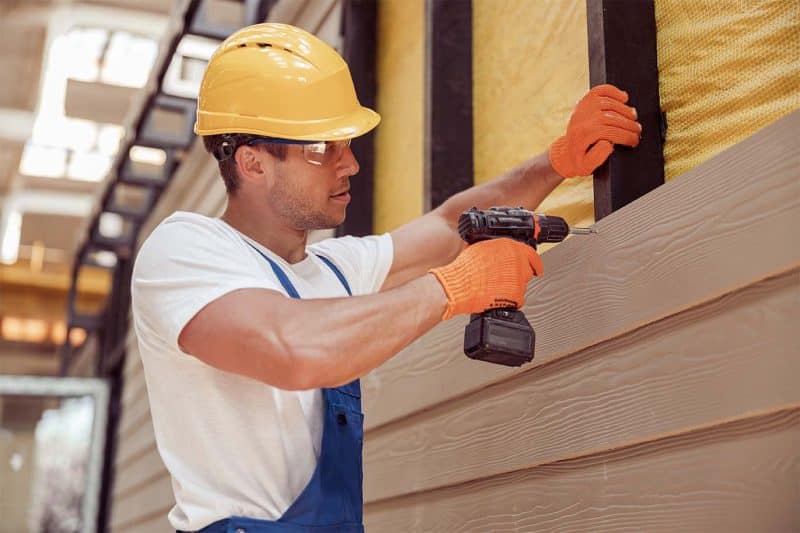
Maintaining Siding Health
Proper maintenance is essential for your siding’s longevity and to protect your home from the elements. Here are some tips to keep your siding in top condition:
Regular Cleanings
Clean your siding at least once a year. For vinyl, use a garden hose and a soft brush; avoid high-pressure washers. When cleaning wood, use a soft brush and mild soap, rinsing thoroughly. Fiber cement siding can be cleaned with a garden hose and mild detergent. During cleaning, inspect for damage, mold, or mildew.
Prompt Repairs
Address damage immediately to prevent further issues. Seal small cracks with caulking and replace severely damaged panels. Reattach any loose panels securely. To clean mold, use a water-bleach solution (1 part bleach to 4 parts water). Consider applying mold-resistant treatments to prevent recurrence.
Annual Inspections
Set a fixed time each year for a thorough inspection of your siding, ideally in spring or fall. Check for cracks, warping, loose panels, rot, insect damage, and peeling paint. Ensure all caulking around windows and doors is intact. Professional inspections can identify hidden issues that might not be visible to the untrained eye.
Repainting and Staining
Repaint or restain wood siding every 3-7 years to protect from moisture and UV damage. Repaint fiber cement siding every 10-15 years using paint recommended by the manufacturer.
Trimming Vegetation
Ensure trees, bushes, and vines are trimmed back from siding to prevent moisture trapping and damage. Also, keep gutters and downspouts clear to direct water away from siding.
Conclusion
Maintaining your siding is a crucial part of home upkeep. Regular cleanings, prompt repairs, and annual inspections are key practices that will keep your siding in excellent condition. These proactive steps ensure your siding continues to protect and beautify your home for many years. Effective siding maintenance and repair are investments that protect and enhance your property’s value. Whether you choose to undertake these tasks yourself or hire professionals, maintaining your siding’s health is a wise investment.
The information presented in this article is based on the expertise of specialists from Empire Exteriors, a reputable Guelph siding company offering professional exterior renovations in Guelph, Kitchener, and Cambridge, Ontario. We thank them for their collaboration.
